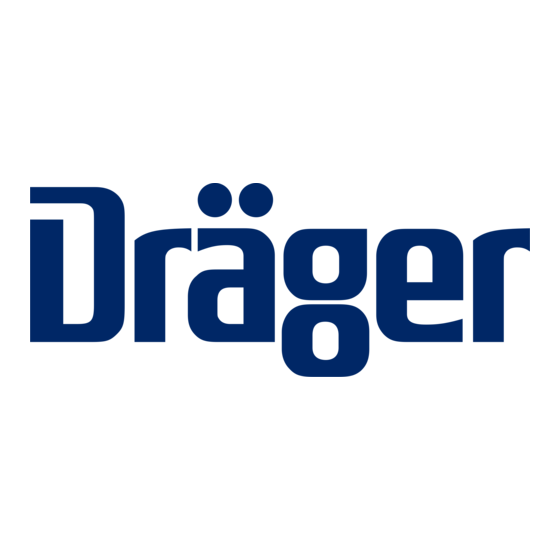
Table of Contents
Advertisement
Status: Draft, 5. March 2015 08:47
Supplement to
instructions for use
– Infinity Acute Care System
Workstation Critical Care and
Neonatal Care
– Infinity Acute Care System
Evita Infinity V500
– Infinity Acute Care System
Babylog VN500
– Evita V300
WARNING
To properly use this medical device,
read and comply with the instructions
for use and this supplement.
SW 2.n
Advertisement
Table of Contents

Summarization of Contents
Supplement to Instructions for Use
Typographical Conventions
Defines typographical conventions used in the document.
Use of Terms
Explains specific terminology used throughout the manual.
General Safety Information
Device Combinations
Information on operating the device with other medical equipment.
Product-Specific Safety Information
Safety Warnings and Precautions
Details specific safety warnings and cautionary notes for product use.
Application
Environment of Use
Specifies conditions and restrictions for device operation.
Overview
Range of Functions
Outlines the primary functionalities and capabilities of the device.
Connecting Accessories
Instructions for attaching various accessories to the device.
Abbreviations
Provides a list of abbreviations used in the document.
Assembly and Preparation
Safety Information for Assembly
Key safety considerations during device assembly and setup.
Maximum Loads of Holders
Details the weight limits for accessories attached to device holders.
Preparing the Medical Cockpit
MEDIBUS and MEDIBUS.X Protocol
Information on using MEDIBUS and MEDIBUS.X communication protocols.
Preparing the Ventilation Unit
HMEs, Filters, and Circuits Safety
Safety guidelines for using HMEs, bacterial filters, and breathing circuits.
Connecting the Mains Power Supply
Connecting the Nurse Call
Procedure for connecting the device to a nurse call system.
Transport within the Hospital
Increasing Tipping Stability
Methods to improve device stability during transport.
Getting Started
Checking Readiness for Operation
Steps to verify the device is ready for use.
Performing Breathing Circuit Check
Procedure for conducting the breathing circuit integrity test.
Getting Started
Breathing Circuit Check Results
Display and interpretation of breathing circuit check outcomes.
Switching to Battery Operation
Procedure for transitioning the device to battery power.
Checking Alarm Signaling
Verification of the device's audible and visual alarm functions.
Getting Started
Checking Alarm Limits
Method for verifying settable alarm limit thresholds.
Acoustic Alarm System Test
Information on the automatic testing of the acoustic alarm system.
Operation
Setting Ventilation
Instructions for configuring ventilation parameters.
Additional Ventilation Settings
Details on advanced ventilation parameter adjustments.
Special Maneuvers
Oxygen Enrichment for Suction
Procedure for using oxygen enrichment during suctioning.
Closed Suction
Guidelines and warnings for performing closed suction.
Medication Nebulization
Safety on Medication Nebulization
Safety precautions related to medication nebulizer use.
Continuous Medication Nebulization
Procedure for initiating and managing continuous medication nebulization.
Monitoring
Flow Monitoring
Information on monitoring airflow parameters during ventilation.
Calibrating Infinity ID Flow Sensors
Steps for calibrating the Infinity ID flow sensors.
Alarms
Displaying Alarm Information
How to view and understand alarm messages.
Acknowledging Alarm Messages
Procedure for acknowledging and clearing active alarms.
Alarm History
Accessing and reviewing past alarm events.
Setting Alarm Tone Volume
Adjusting the volume level for audible alarms.
Configuration
Information on Configuration
Overview of device configuration settings.
Configuring Alarm Settings
Steps to adjust various alarm parameters.
Setting the Minimum Alarm Volume
Defining the lowest acceptable alarm volume level.
Configuration
Battery Alarm Priority Settings
Configuring priority levels for battery-related alarms.
System Status
Displaying General Status Information
Viewing overall device operational status and history.
Alarm – Cause – Remedy
Air Supply Alarms
Details on air supply related alarms, their causes, and remedies.
Airway Pressure Alarms
Information on airway pressure alarms, causes, and solutions.
Alarm Limit Confirmation
Alarms related to unconfirmed alarm limit changes.
Alarm – Cause – Remedy
Battery Alarms
Alarms concerning battery status, causes, and remedies.
Device Failure Alarms
Troubleshooting device failures and system malfunctions.
Alarm – Cause – Remedy
Device Failure Troubleshooting
Detailed guidance on device failures and system errors.
PEEP Related Alarms
Alarms for high and low PEEP levels, causes, and remedies.
Alarm – Cause – Remedy
Setting Confirmation Alarms
Alarms for unconfirmed settings or standby mode activation.
Tidal Volume Alarms
Alarms related to tidal volume not being reached.
Cleaning, Disinfection and Sterilization
Safety on Reprocessing
Safety information regarding device reprocessing procedures.
Reprocessing List
List of medical devices and their reprocessing methods.
Maintenance
Overview of Maintenance
General information and safety warnings for maintenance procedures.
Technical Data
Ambient Conditions
Environmental operating parameters like altitude.
Set Values
Configurable parameters and their ranges for device operation.
Technical Data
Performance Characteristics
Details on the device's performance specifications.
Technical Data
Displayed Measured Values
Information on values measured by the device.
Technical Data
Displayed Calculated Values
Information on calculated values derived from measurements.
Monitoring Parameters
Details on monitoring sound pressure levels of alarm signals.
Technical Data
Alarm Tone Sequence Levels
Sound pressure levels for different alarm priorities and sequences.
Technical Data
Operating Data
Information on device operation, power supply, and noise emission.
Weight Specifications
Details on the weight of various device components.
Technical Data
Essential Performance Characteristics
Key performance aspects and integrated monitoring alarms.
Automatic Alarm Limits
Pressure Monitoring Alarms
Automatic alarm limits for PEEP and Plow pressure monitoring.
Technical Data
Volume Monitoring
Details on monitoring tidal and minute volumes.
Electromagnetic Compatibility
Information regarding EMC standards and separation distances.
Connections to IT Networks
Information on Network Connection
Prerequisites and guidelines for connecting the device to an IT network.
Serial Interfaces
Supported serial interfaces like RS232 and MEDIBUS.
Connections to IT Networks
Unsuitable Network Consequences
Risks associated with using non-compliant IT networks.
Electrical Requirements for Networks
Electrical specifications for connected devices and networks.
Principles of Operation
Pneumatic Functional Description
Description of pneumatic components like humidifiers and nebulizers.
Flow Reduction Anti Air Shower
Explanation of the Anti Air Shower function and flow reduction.














Need help?
Do you have a question about the Infinity Acute Care System Babylog VN500 and is the answer not in the manual?
Questions and answers